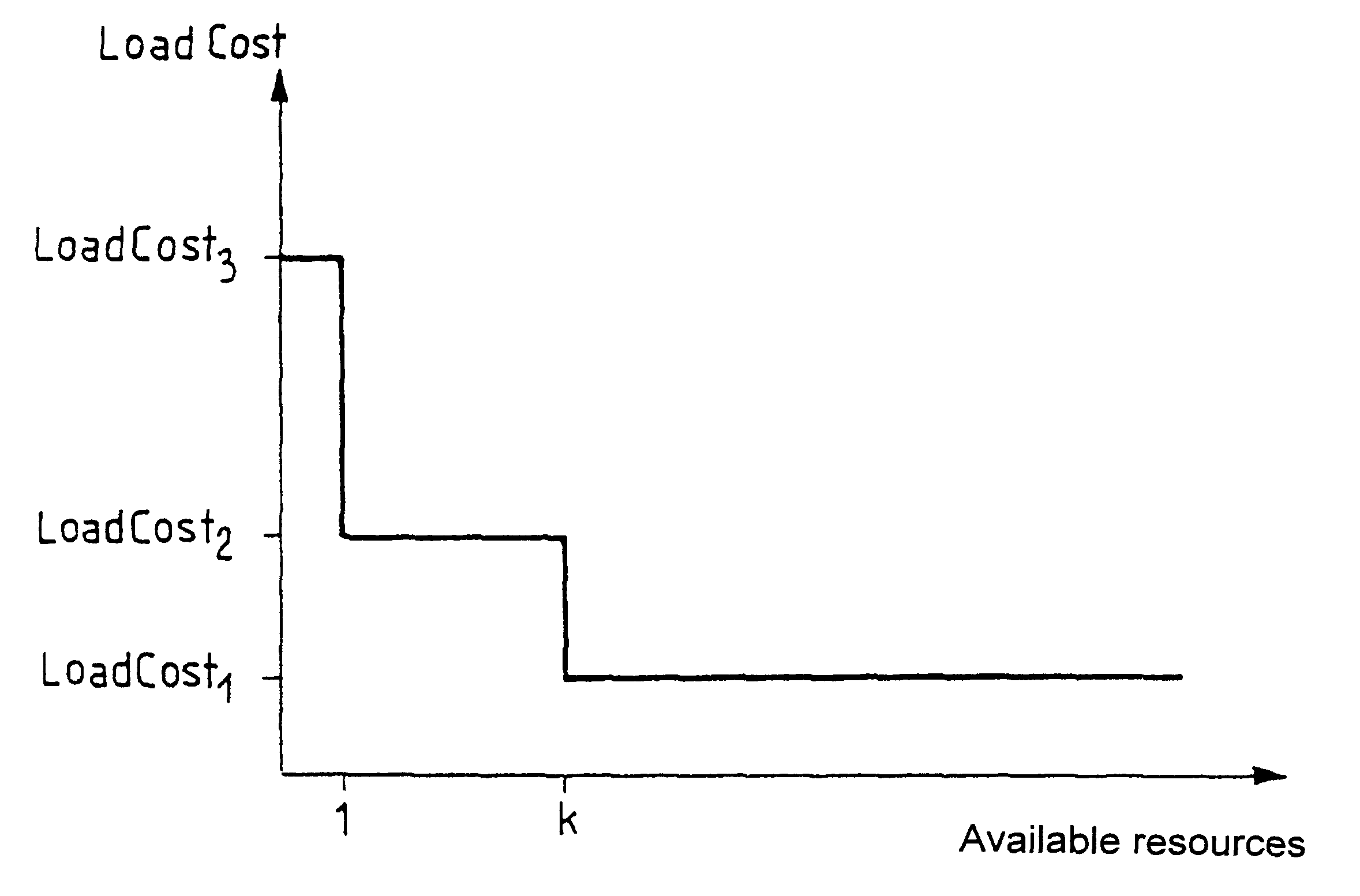Routing calls in a telecommunications network on the basis of passband
- Summary
- Abstract
- Description
- Claims
- Application Information
AI Technical Summary
Benefits of technology
Problems solved by technology
Method used
Image
Examples
second embodiment
A second embodiment is described below adapted to protocols of the N.times.64 type in which fall-back or regression is not allowed. Under such circumstances, using the same notation as above, it is possible to define the first component of the cost vector as follows:
BandCost:=0 if b.sub.avail =b.sub.required and
BandCost:=8 if b.sub.avail
where the value 8 or "saturated" is a value which by definition is greater than any other value. Such a definition for the first component of the cost function makes it possible to look for minimum cost routings capable of carrying the call.
In a third embodiment, the invention proposes merely considering that the first component is equal to the inverse of the bandwidth available on the trunk, i.e.:
BandCost:=-b.sub.avail
In this case, the invention serves simply to find the routing having the greatest bandwidth, and for equal bandwidth the routing having the least cost.
In all cases, it is possible to use the Dijkstra algorithm to determ...
PUM
 Login to View More
Login to View More Abstract
Description
Claims
Application Information
 Login to View More
Login to View More - R&D
- Intellectual Property
- Life Sciences
- Materials
- Tech Scout
- Unparalleled Data Quality
- Higher Quality Content
- 60% Fewer Hallucinations
Browse by: Latest US Patents, China's latest patents, Technical Efficacy Thesaurus, Application Domain, Technology Topic, Popular Technical Reports.
© 2025 PatSnap. All rights reserved.Legal|Privacy policy|Modern Slavery Act Transparency Statement|Sitemap|About US| Contact US: help@patsnap.com


